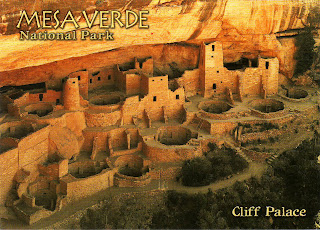A great concentration of ancestral Pueblo Indian dwellings, built from
the 6th to the 12th century, can be found on the Mesa Verde plateau in
south-west Colorado at an altitude of more than 2,600 m. Some 4,400
sites have been recorded, including villages built on the Mesa top.
There are also imposing cliff dwellings, built of stone and comprising
more than 100 rooms.
 |
| USA - Mesa Verde |
 |
| USA - Mesa Verde |
 |
| USA - Mesa Verde |



+-+Al+Alin.JPG)










































